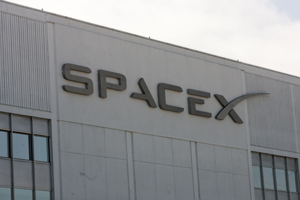Elon Musk is known for being a demanding boss. When his biographer noticed hundreds of people working at Tesla headquarters on a Saturday, Musk complained that the team had “gone soft.” Musk believed more should have been there.
Yet even with his high expectations, it was a surprise last summer when his Hawthorne aerospace company, Space Exploration Technologies Corp., or SpaceX, dumped about 5 percent of its staff in one fell swoop, summarily transferring some employees to new departments and sending others straight out the door.
At the time, SpaceX President Gwynne Shotwell said the firings were not layoffs but a result of employees’ poor performances.
“We did our annual performance review, there were some low performers and we terminated them,” she was quoted as saying at an aerospace industry conference by industry website SpaceNews.com.
But some of those former employees are fighting back, saying the company violated state law when it did not give adequate notice of the job cuts.
Former workers have alleged that SpaceX did not abide by California’s Worker Adjustment and Retraining Notification Act, or Warn Act, that requires employers provide at least 60 days’ notice whenever they plan to lay off 50 or more employees within a 30-day period.
Bobby R. Lee and Bron Gatling, two former structural technicians at SpaceX, brought the first claims against the aerospace company in early August, a couple of weeks after they were terminated.
Another former employee, Laura Barragan, filed a similar complaint in Los Angeles Superior Court later that month, also alleging that SpaceX ordered a mass layoff without providing state-mandated notice to workers beforehand.
Both pending matters seek to collect damages on behalf of every employee fired after last year’s performance review, citing violations of the Warn Act.
Attorneys representing the plaintiffs did not return requests for comment.
The claims got a boost last month when a superior court judge vetoed SpaceX’s effort to halt the Warn Act allegations.
The next hearing for both cases is scheduled for early October.
Hefty threat
State lawmakers intended for the Warn Act to provide employees adequate notice to prepare for layoffs in the event of an employer experiencing financial hardship, said Terri Tracy, partner in the Century City office of Freeman Freeman & Smiley who represents employers facing Warn Act allegations but is not involved in either SpaceX case.
“The intent was to address what the common person would identify as a layoff,” Tracy said. “In other words, it’s for something that’s done for lack of work, lack of funding or lack of business. It’s not for something where you say, ‘Hey, X number of people are the lowest performers in the company and we’re going to let them go.’”
As a result, Tracy said, last year’s dismissals should not trigger the Warn Act, a position the company took in response to the suits. Indeed, she added, the pair of claims against SpaceX are just another example of the negative impact California’s employee-friendly laws can have on local businesses.
“It’s one of the circumstances where a California company is being hauled into court by plaintiffs who are claiming there is a violation of the law and the company is denying there is a violation,” Tracy said.
The Warn Act, however, is not necessarily the sharpest thorn in the side of California businesses, she said. But it can pose a hefty threat to many employers.
If successful, disgruntled former employees could collect 60 days of pay plus benefits and attorneys’ fees, Tracy said. Companies can also face a $500 daily civil penalty for up to 60 days.
“In terms of the kinds of lawsuits that I think trouble California employers the most, this is not at the top of the list,” she said. “But when they’re brought, they’re brought on behalf of a class of employees. So since they involve a relatively large number of employees, there’s a relatively large amount of risk and exposure to liabilities.”
SpaceX had about 3,200 workers on staff at the time, meaning a 5 percent reduction would equal about 160 employees. John Taylor, a spokesman for the company, declined to specify the exact number of employees fired last year. Court documents filed by the plaintiffs allege SpaceX laid off between 200 and 400 workers.
Pushing forward
SpaceX is not likely to endure a repeat of last summer’s round of firings, said Marco Caceres, a senior analyst at Teal Group Corp. in Fairfax, Va., who follows Musk’s company.
Despite last month’s failed rocket launch, which was intended to deliver cargo to the International Space Station but ended in a fiery explosion, SpaceX has benefited from a number of recent successes, Caceres said. The biggest recent victory came in March when the Air Force certified SpaceX’s Falcon 9 rocket to launch military satellites.
“You won’t see many layoffs from SpaceX,” he said. “You’ll probably see more hiring announcements than anything.”
Taylor, the SpaceX spokesman, said the company has increased its workforce by more than 20 percent since last year. More than 4,000 employees now work for the company.
Moving forward, the best way to avoid situations where an employer is faced with terminating underperforming workers is to provide regular, constructive feedback, said Betsy Johnson, managing shareholder in the downtown L.A. office of Ogletree Deakins Nash Smoak & Stewart who counsels employers on labor law matters.
“When you’re hiring employees at any level, it’s an investment of time and money and it’s expensive to replace employees,” Johnson said. “Given the opportunity to give someone some constructive criticism and get them back on track, that usually is the best practice.”

